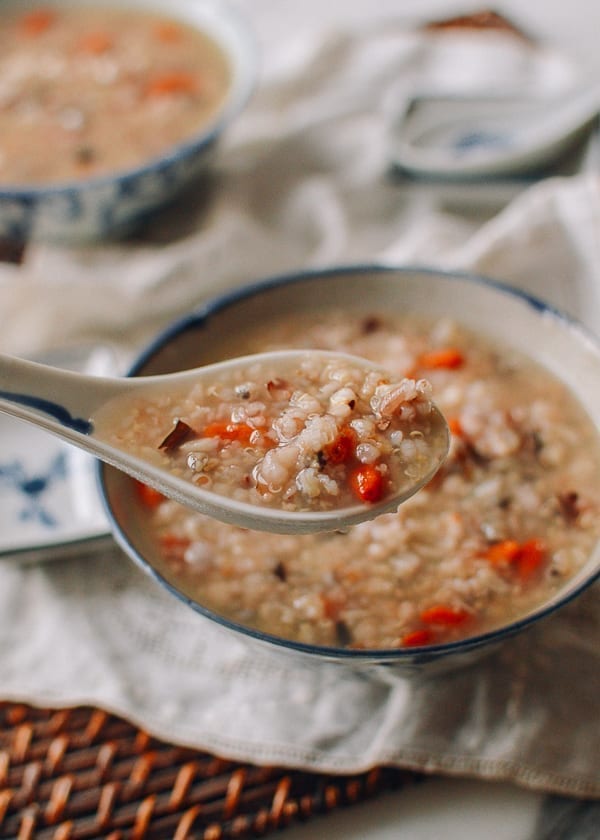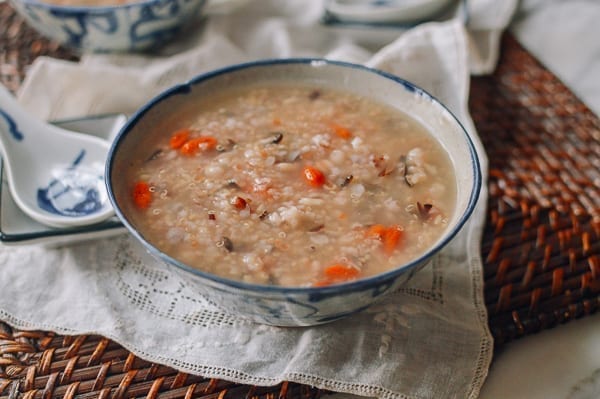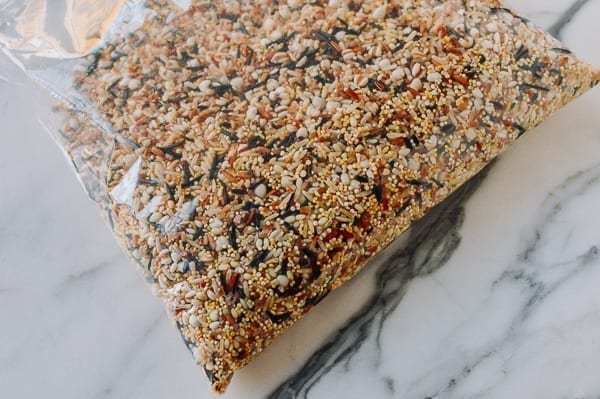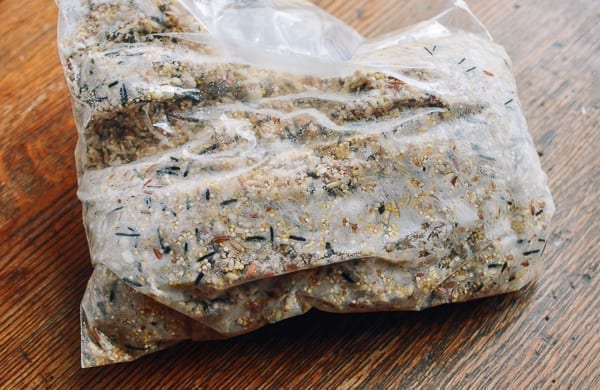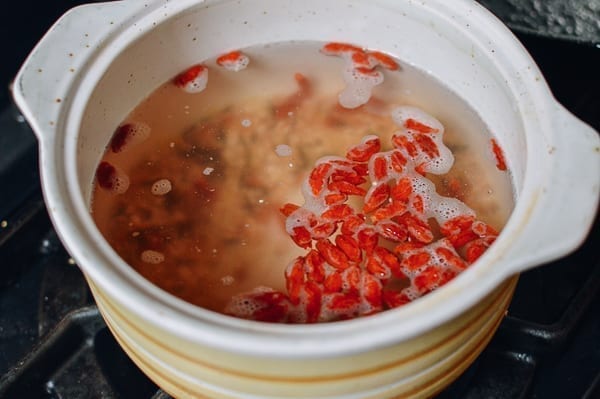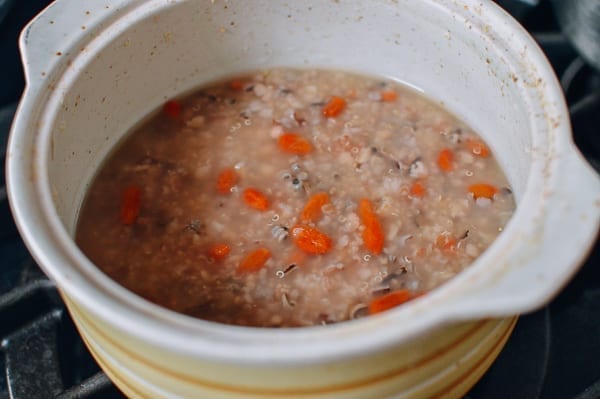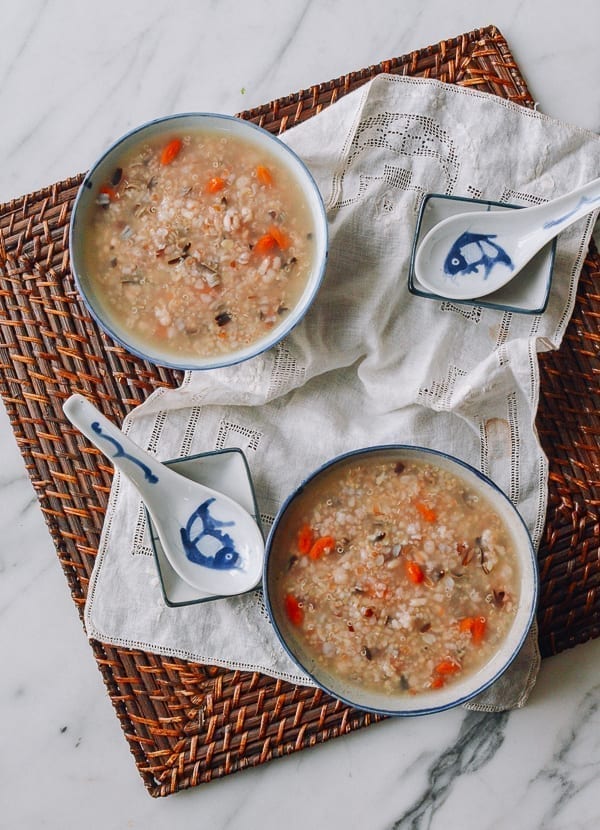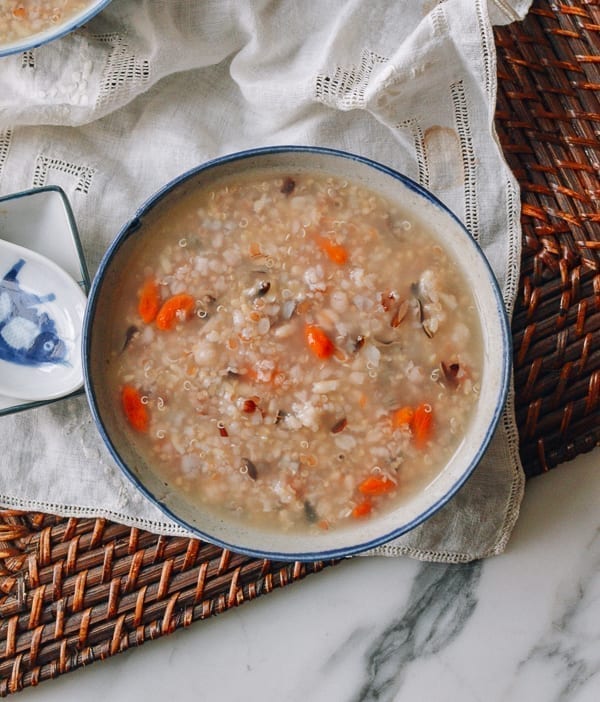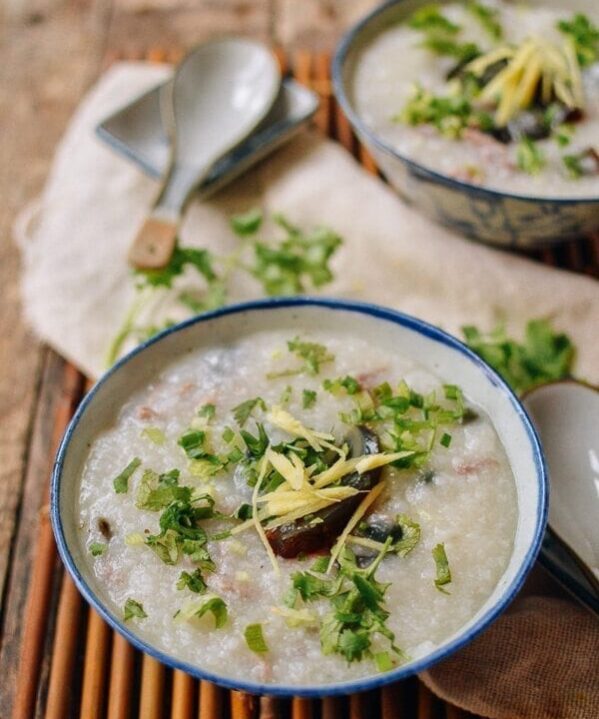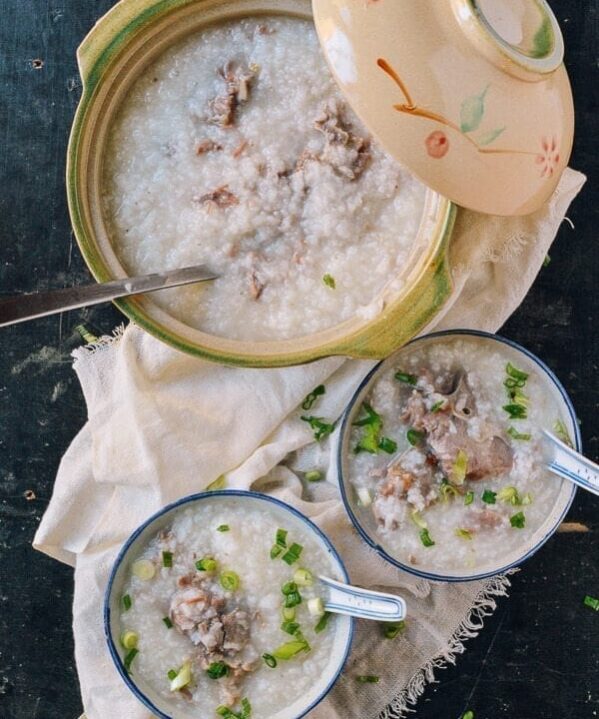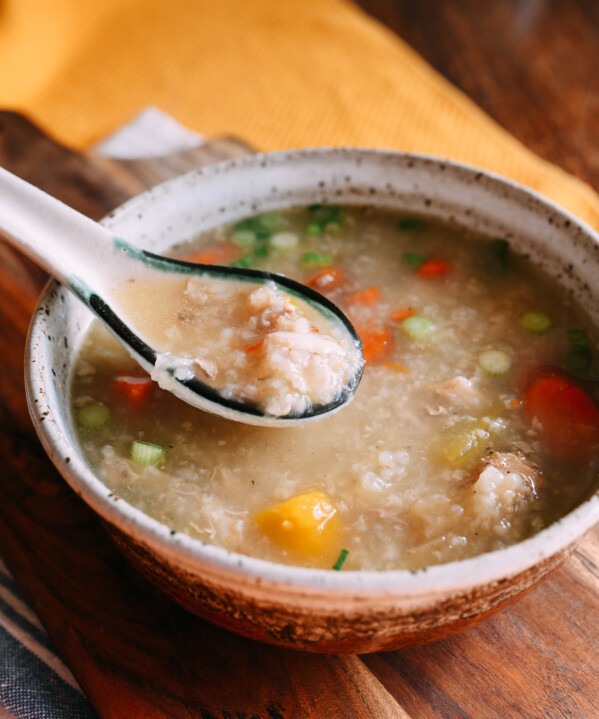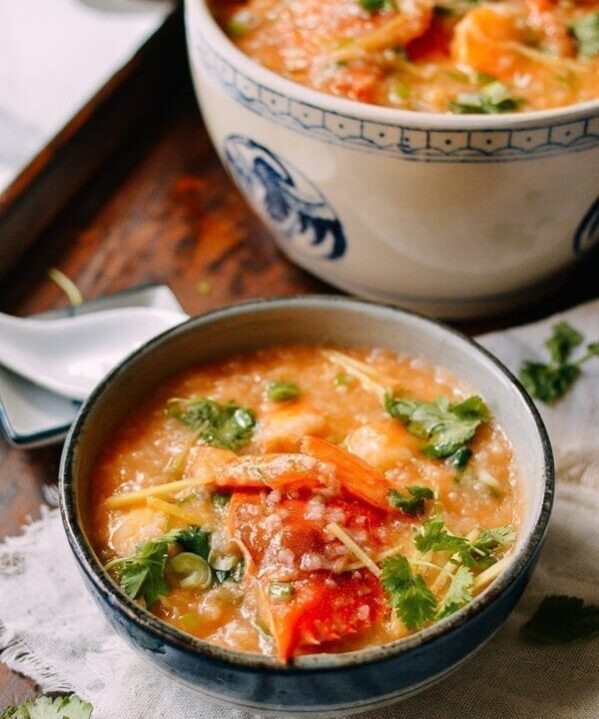According to TCM (Traditional Chinese Medicine), winter is the season for “storing and stashing,” for your body to preserve its strength. What could be better than this multigrain congee? It warms, hydrates, and replenishes the nutrients your body needs.
A Healthier, More Flavorful Congee Recipe
With the December holidays and Chinese New Year celebrations in the rearview mirror, we all must wave bye-bye to the excuses to indulge. And I’m not just talking about New Year’s resolutions—it’s time to think about eating healthy again!
In many ways, I prefer the multigrain congee to white rice congee. Multigrain congee is more robust in texture and earthier in flavor, not to mention so much healthier. Because this congee recipe uses whole grains, it’s high in fiber!
Congee In Half the Cooking Time
We all know that cooking congee can take a long time. That’s why I introduced my 20-minute Congee recipe. The secret is frozen, rinsed white rice, which slashes the cooking time while still yielding that slow-cooked texture. Plus, no special appliances or gadgets needed!
The science behind it is that the water soaks into the rice, and it freezes, expands, and breaks the rice kernel into tiny pieces—dramatically reducing the cooking time because the starches can be released and cooked faster.
Now it’s time to apply this time-saving method to a multigrain porridge! When some readers commented that they applied the frozen washed rice method to other grains without success, I had to investigate.
Multigrain porridge generally takes even longer to cook, as there are outer husks involved, so I realized the grains needed to soak in order for them to soften and become more absorbent. What’s more, some whole grains have thicker husks and are overall less absorbent than others, like wild rice, for example.
The secret step? Soaking the grains for 1-2 hours, draining them, freezing them, and then cooking for 30 minutes. If you like to eat multigrain congee often, you can apply the soaking and freezing steps to a large batch and then cook as you need it.
The Magic of Thermal Cooking
Another trick I’ve discovered is boiling the congee twice and turning off the heat between boiling. I found the congee cooks more evenly––and with less risk of boiling over––with its own thermal energy.
I know it’s hard to believe, but you need to give it a try. The same concept has been used in energy-saving thermal cookers, used by folks on the road. An inner pot is insulated inside an outer pot, letting food cook for 2-3 hours after the initial heat has been applied!
One More Quick Tip from a Reader
One of our readers mentioned that her mother once told her not to stir the congee when cooking. She said that not stirring prevents the congee from sticking to the bottom of the pot.
I promised her that I’d try her mom’s trick, and when I did, I found that it really works! You should give it a go as well!
So pick out your favorite porridge grains—any combination will work—and let’s get cooking!
Multigrain Congee Recipe Instructions
Soak the grains in water for 2 hours. You may choose to add in grains that don’t require soaking (e.g., if you’re including white rice). If so, those can be simply rinsed and added after the soaking process.
Rinse and drain the grains. Put the washed rice in a resealable bag.
Freeze for at least 8 hours before use.
When you’re ready to cook, you’ll need 4 cups of water for every cup of frozen multigrain mixture. Put everything in a pot with the lid on, and bring to a boil over high heat.
Once boiling, turn off the heat with the lid on. Do not stir. Let the congee sit on the stove for 15 minutes.
During this time, the congee will continue to cook, and you won’t have to worry about it boiling over. After 15 minutes, turn the heat on high and bring to a boil again. Once boiling, turn off the heat and keep the lid on. Again, do not stir. Let it sit on the stove for 15 minutes, or until ready to serve.
At this point, the longer you wait, the thicker the congee becomes. I usually cook it in the morning and let it sit with the lid on. Then I reheat right before serving. This saves tons of time!
30 Minute Multigrain Congee
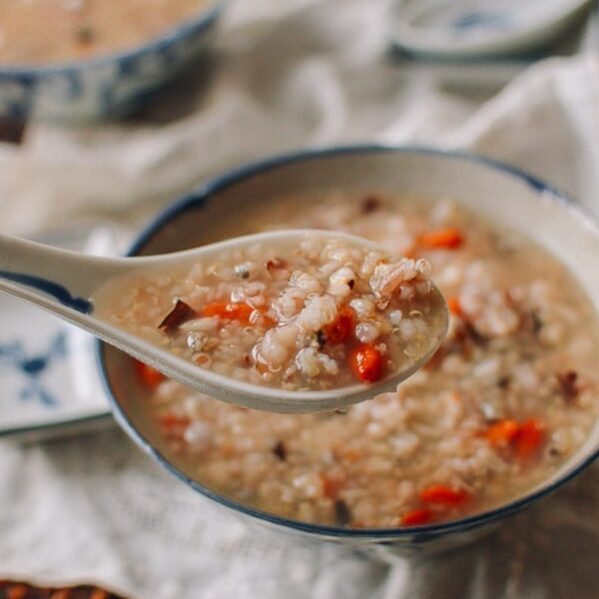
Ingredients
Any combination of the following:
- brown rice
- brown sweet rice
- black rice
- black sweet rice
- barley
- wild rice
- farro
- sorghum
+ 2 tablespoons goji berries (optional antioxidant booster)
Instructions
- Soak the grains in water for 2 hours. You may choose to add in grains that don’t require soaking (e.g., if you’re including white rice). If so, those can be simply rinsed and added after the soaking process.
- Wash and drain the grains. Put the washed rice in a resealable bag, and freeze for at least 8 hours before use.
- When you’re ready to cook, you’ll need 4 cups of water for every cup of frozen multigrain mixture. Put everything in a pot with the lid on, and bring to a boil over high heat. Once boiling, turn off the heat with the lid on. Do not stir. Let the congee sit on the stove for 15 minutes.
- During this time, the congee will continue to cook, and you won’t have to worry about it boiling over. After 15 minutes, turn the heat on high and bring to a boil again. Once boiling, turn off the heat and keep the lid on. Again, do not stir. Let it sit on the stove for 15 minutes, or until ready to serve.
- At this point, the longer you wait, the thicker the congee becomes. I usually cook it in the morning and let it sit with the lid on. Then I reheat right before serving. This saves tons of time!
